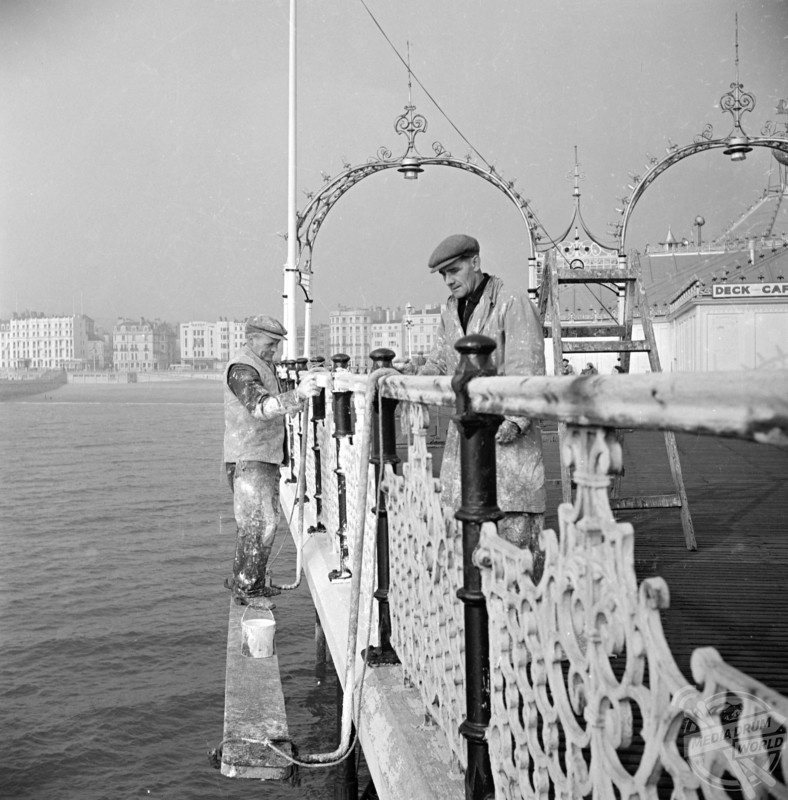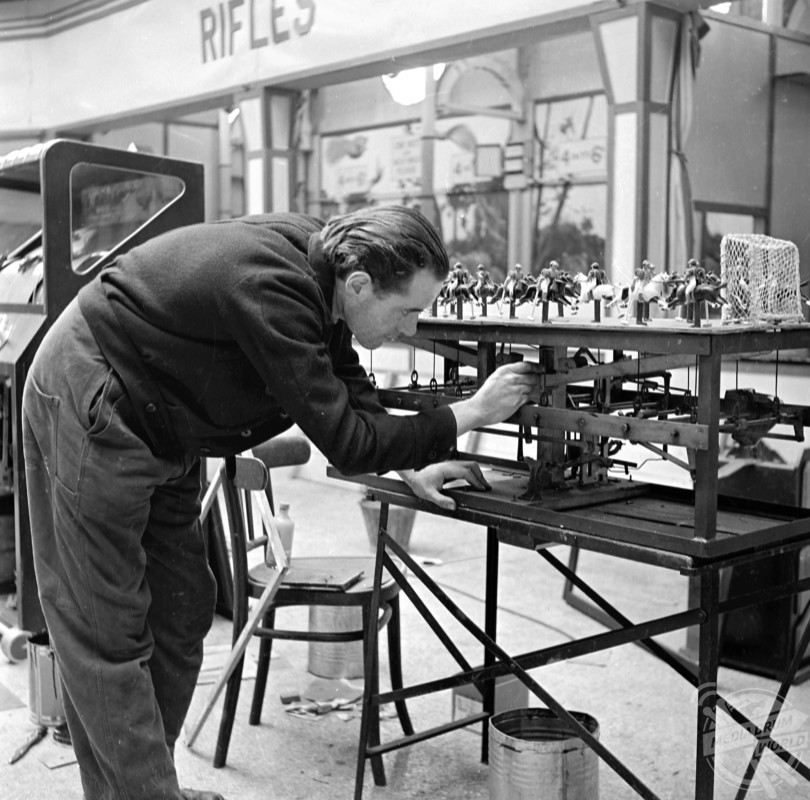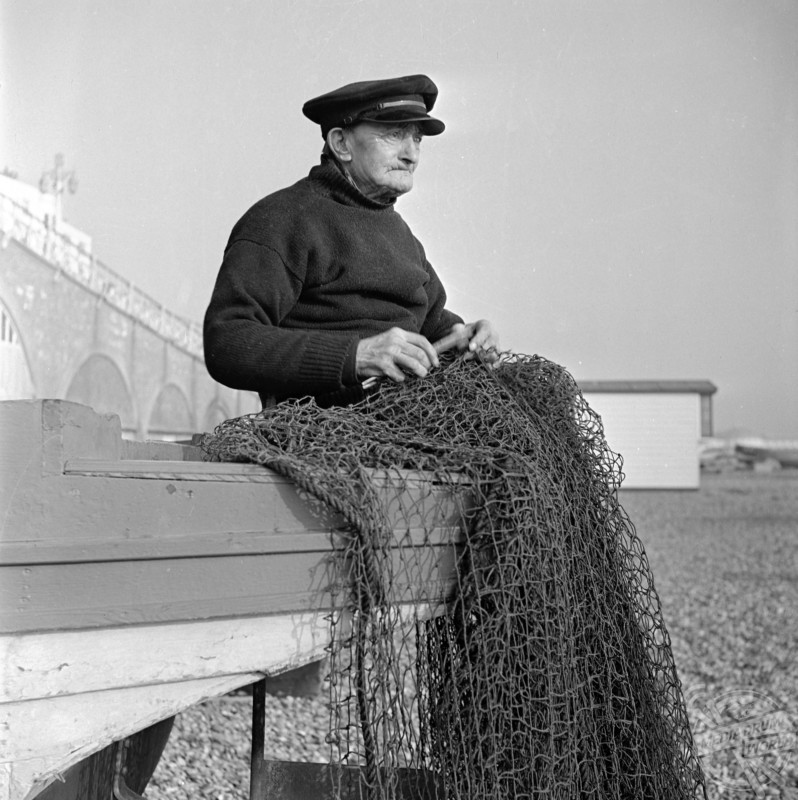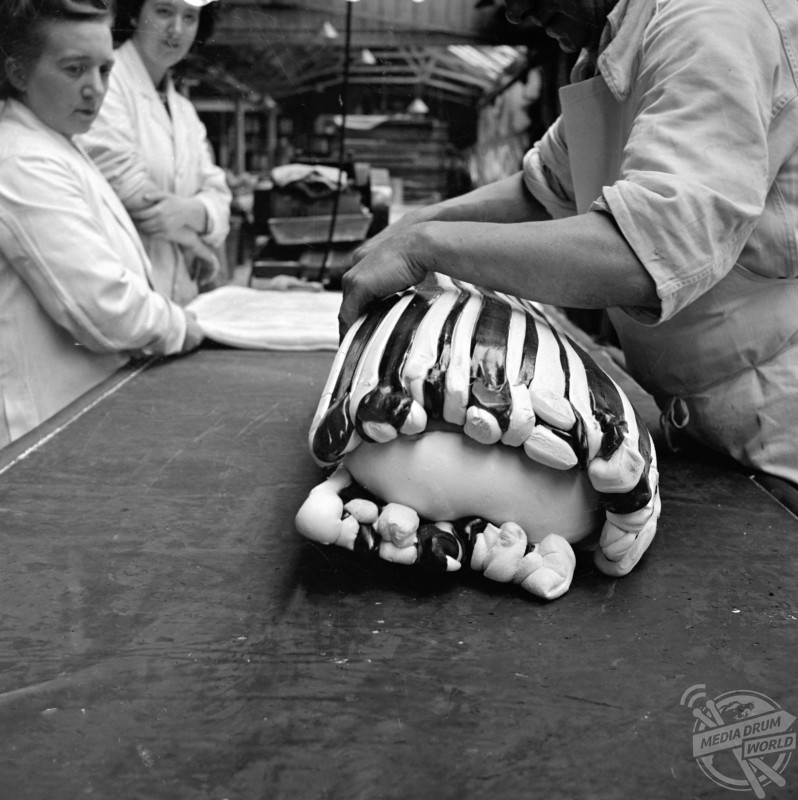
By Alex Jones
NOSTALGIC pictures show Brighton Pier in its heyday preparing for the upcoming holiday season.
Stunning photos, taken in March 1952, show dozens of workers eagerly beavering away making sure the town and its assets were in shipshape and sparkling before the Easter Holidays.

The evocative shots show one engineer tucked away inside a jukebox making delicate last-minute repairs, bold painters risking life and limb to repair the town’s iconic pier, and deckchair attendants ensuring their loungers were in good working order.
Another set of lip-smacking photos show workers creating the legendary ‘Brighton Rock’ – a must have for tourists young and old alike on their visit to the coast.

The remarkable photos evoke memories of donkey rides on the beach, greasy fish and chips on a bench facing the sea, and gaudy Punch and Judy shows drawing crowds along the promenade – perhaps a product of their time.
In 1952, Brighton like much of the country was still getting back on its feet after the war and the Pier Pavilion was starting to look back to its best. Just a few years previously it had been stripped of all its boardwalks as there had been mounting fears the Germans may have used it as a landing platform.

Even though airfares became increasingly affordable throughout the 1950s and 60s, a trip to the seaside was still a staple for most families lucky enough to get a break. On a sunny day in Brighton, the town was swamped with people from all over south-east England, especially from nearby London.
Usually families would stay in a seafront guesthouse or a ‘Hi-De-Hi’ style holiday camp, which offered a brief respite before the children would be back on the beach building sand castles, rock pooling or, more likely, begging for coins to feed the enticing arcade games.
And what a trip to the seaside be without a piece of rock?

Fascinating photos show how the sugary sweet was initially wrapped into a huge roll of candy, approximately one footwide, before it was endlessly stretched and chopped to its more recognisable form.
At first, each of the letters crafted by the sweetmakers would measure a couple of inches high. Then it would be slowly stretched over 180 yards until the ‘Brighton Rock’ writing only measured a fraction of an inch.
The pictured slab of candy would probably make just under 1,000 mouth-watering sticks of rock.






